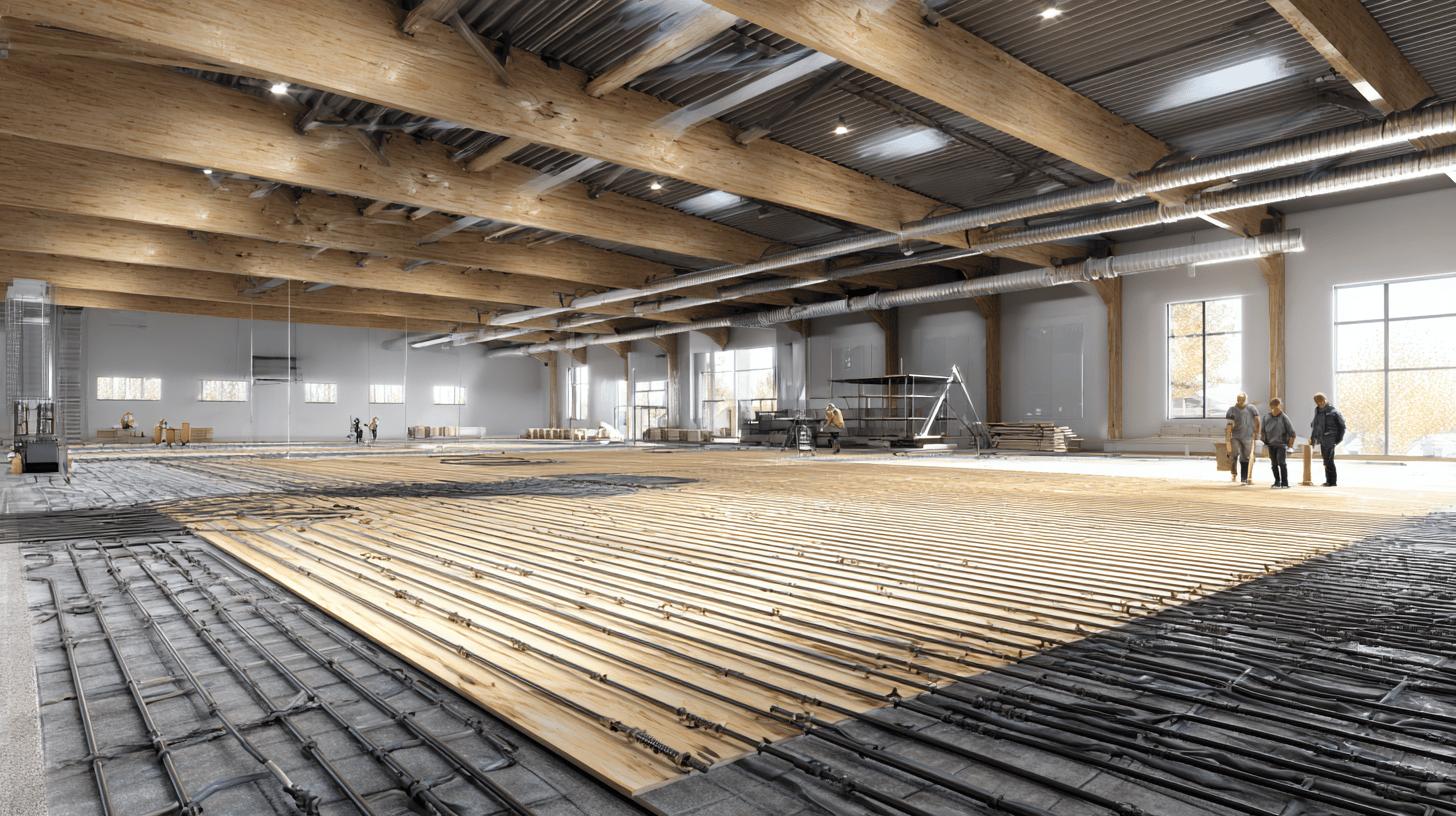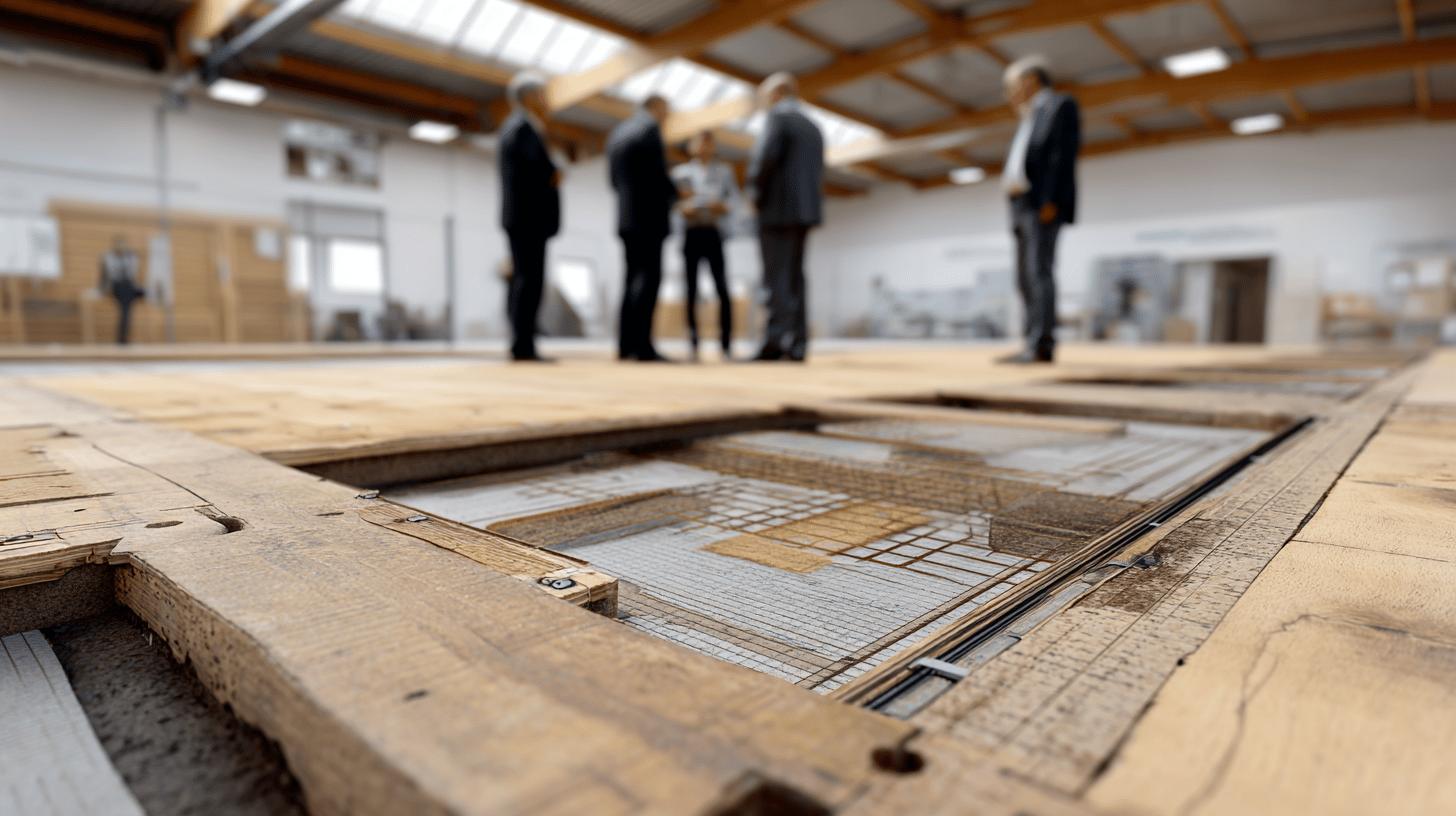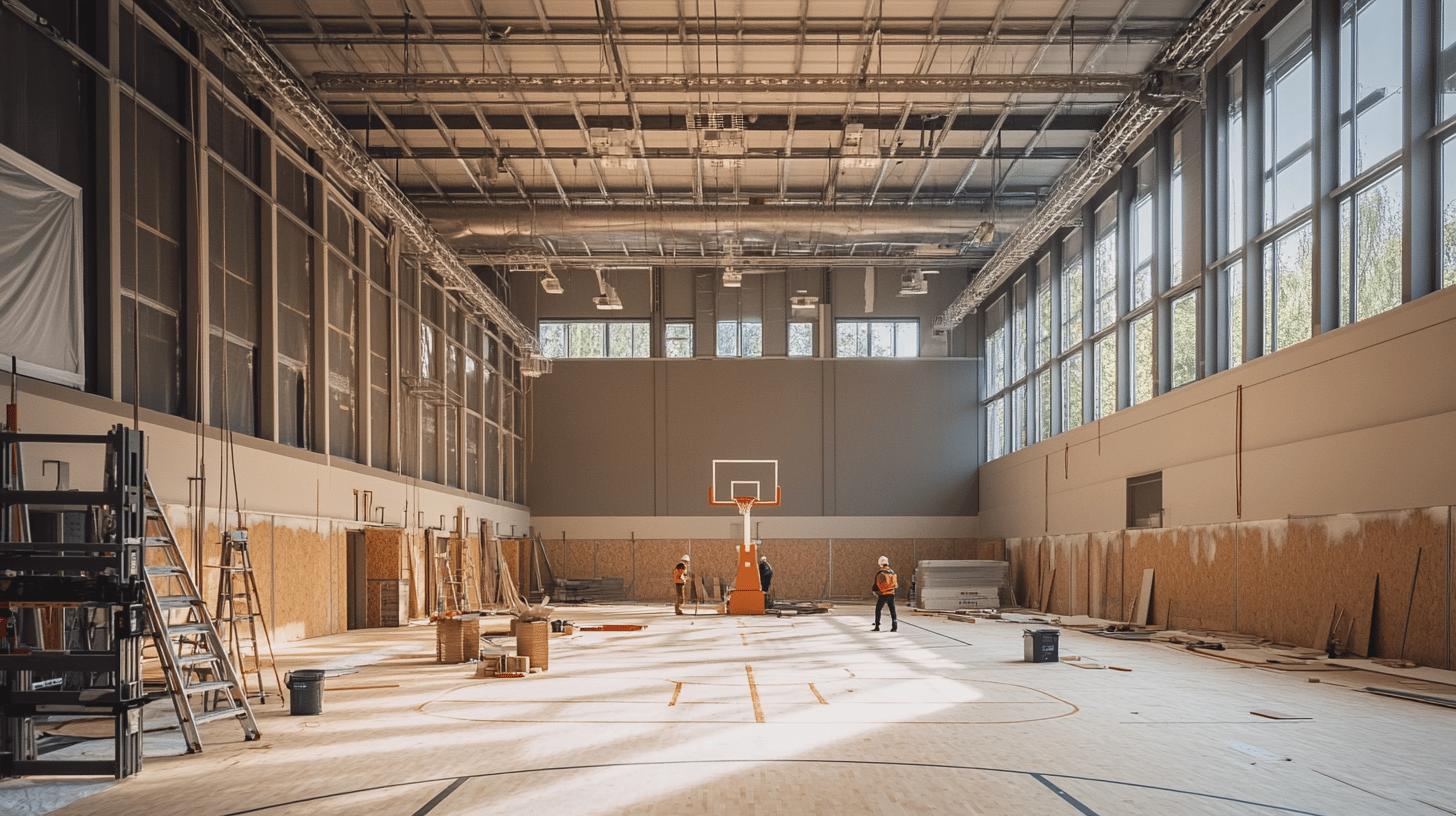Can timber sports courts embrace the warm embrace of under-floor heating, or are they inherently incompatible? This question ignites debates among facility managers considering the added comfort of heated venues. While engineered wood flooring shows promise with its multi-layered resilience, assessing its compatibility with under-floor heating systems is essential. We will delve into how engineered wood’s structure can optimally adapt to thermal variations and assess critical compatibility factors. Discover how your sports court can maintain structural integrity and achieve optimal heating performance through informed decision-making.
Assessing Compatibility of Under-Floor Heating with Timber Sports Courts
Under-floor heating systems are particularly compatible with certain types of timber flooring used in sports courts, with engineered wood being the most suitable option. Engineered wood is highly recommended for its superior adaptability to the temperature fluctuations and humidity changes that occur in environments with under-floor heating. This type of wood flooring is constructed with multiple layers of wood veneer, which enhances its resilience against the thermal expansion and contraction that can destabilise solid timber alternatives. This multi-layered construction not only improves dimensional stability but also provides a robust platform that withstands the rigours of sports activities, ensuring a long-lasting performance.
The preference for engineered wood over solid wood in the context of under-floor heating is primarily due to its structural integrity and ability to maintain its form under varying conditions. Solid wood, while aesthetically pleasing, is more susceptible to warping and gapping due to its homogenous structure, which does not accommodate the stresses of heat as efficiently as engineered alternatives. Therefore, when assessing the compatibility of under-floor heating with timber sports courts, engineered wood emerges as the optimal choice for maintaining both functionality and aesthetics.
Key compatibility factors to consider include:
- Thermal expansion
- Humidity resistance
- Structural integrity
- Layered construction
- Temperature stability
.
This comprehensive understanding of the compatibility between under-floor heating systems and timber sports courts underscores the importance of selecting the right type of wood flooring to ensure both performance and longevity.
Benefits of Under-Floor Heating in Timber Sports Courts
Under-floor heating in timber sports courts significantly enhances energy efficiency and ensures even heat distribution. How does under-floor heating improve energy efficiency in sports courts? By allowing heat to rise uniformly from the floor, it minimises energy loss compared to traditional heating systems that may result in uneven heating and increased energy consumption. This consistent heat distribution not only reduces energy usage but also creates a comfortable environment for athletes and spectators alike, enhancing overall user experience.
Certain woods, such as oak, are particularly beneficial for under-floor heating applications due to their excellent thermal conductivity and stability. Why is oak a favourable choice for heated floors? Oak’s ability to conduct heat efficiently allows for more effective heat transfer from the under-floor system to the court surface, ensuring rapid and consistent warming. This property also prevents the formation of cold spots, maintaining a stable and uniform temperature throughout the playing area, which is crucial for sports activities that demand a consistent and reliable surface.
Under-floor heating contributes to a more comfortable and consistent indoor sports environment by regulating temperature and reducing fluctuations. How does this system impact the playing environment? The regulation of temperature through under-floor heating ensures that the sports court remains at an optimal temperature range, reducing the likelihood of overheating or excessive cooling. This stability is essential for maintaining the integrity of timber floors and providing a safe and welcoming setting for both professional and recreational activities.
Installation Guidelines for Under-Floor Heating Systems in Timber Sports Courts

Subfloor Preparation and System Installation
Proper subfloor preparation is essential for installing under-floor heating systems in timber sports courts. Why is subfloor preparation so crucial? It ensures a clean, dry, and level surface, which is vital for preventing uneven heating and potential floor instability. A meticulously prepared subfloor not only supports the structural integrity of the flooring system but also enhances the efficiency of the under-floor heating by providing a stable foundation for heat distribution.
Double Heat Spreader Plates (DHSP) are particularly effective in facilitating the installation of under-floor heating systems. How do DHSP contribute to ease of installation? They are designed for straightforward application on traditional joists and are compatible with ‘sprung’ flooring systems commonly used in sports halls. These aluminium plates act to evenly distribute heat across the floor surface, ensuring a uniform temperature that is crucial for sports activities. By minimising hotspots and cold areas, DHSP help maintain a consistent and comfortable environment.
Ensuring System Compatibility and Performance
Selecting the appropriate materials and adhering to manufacturer guidelines is critical for ensuring compatibility and optimal performance of under-floor heating systems. What considerations are necessary for material selection? Choosing materials that can withstand the operational demands of both the heating system and the timber flooring is essential. This includes options like engineered wood that can handle temperature fluctuations while maintaining its structural integrity.
Why is professional installation recommended? Engaging experienced professionals for installation ensures the correct application of materials and adherence to safety protocols, significantly reducing the risk of system failures. Professionals bring expertise in navigating complex installations, thereby enhancing system durability and performance. Following these guidelines not only ensures compatibility but also prolongs the lifespan of the heating system and the timber flooring, providing a safe and effective solution for sports courts.
Maintenance Considerations for Timber Sports Courts with Under-Floor Heating
Managing humidity levels is crucial for maintaining timber sports courts with under-floor heating. What is the ideal humidity range for these environments? Maintaining humidity levels between 40-60% is essential to prevent warping and maintain the structural integrity of the wood. Fluctuations outside this range can cause the timber to expand or contract excessively, leading to gaps or uneven surfaces. Implementing humidity controls and using dehumidifiers, when necessary, can help maintain these levels and thus extend the lifespan of the flooring.
Gradual temperature changes are equally important in preventing damage to timber flooring. Why are gradual temperature adjustments necessary? Sudden temperature shifts can lead to thermal shock, causing the wood to warp or crack. By adjusting the temperature incrementally, the wood can acclimate more naturally to the heat, thereby reducing the risk of structural damage. Ensuring that the heating system operates within recommended temperature ranges and avoiding abrupt increases or decreases are vital practices for maintaining the court’s condition.
Common maintenance tasks for timber sports courts with under-floor heating include:
- Monitor moisture levels
- Schedule regular inspections
- Ensure gradual temperature changes
- Address any signs of floor warping
.
These maintenance practices not only preserve the aesthetic and functional qualities of the sports courts but also ensure a safe and reliable environment for sports activities. Regular attention to these details helps mitigate the challenges posed by under-floor heating systems, such as warping and moisture imbalance.
Potential Challenges and Solutions for Under-Floor Heating in Timber Sports Courts
What are the potential challenges of implementing under-floor heating in timber sports courts? Overheating and uneven heating are primary concerns. These issues arise particularly in poorly insulated properties, where the inefficiency of heating systems can lead to damage of the timber floor. The impact of uneven heating can cause certain areas of the sports court to become hotter than others, leading to discomfort for users and potential damage over time.
Moisture imbalance is another significant challenge associated with under-floor heating in timber courts. How does moisture affect the timber flooring? Incorrect moisture levels can cause the timber to warp or expand, compromising the floor’s structural integrity. This can lead to uneven surfaces that not only affect the performance of the court but also pose safety risks to athletes. Ensuring consistent humidity levels and proper temperature regulation is essential for maintaining the floor’s condition.
To address these challenges, innovative heating solutions and proper system installation are critical. What are the solutions to these issues? Implementing advanced heating technologies that offer precise temperature control can help mitigate the risks of overheating and uneven heating. Additionally, engaging professionals for the installation process ensures that the heating system is integrated effectively with the timber flooring. Regular maintenance and monitoring of the system are also imperative to sustain optimal conditions, ensuring the longevity and performance of timber sports courts.
Case Studies and Expert Insights on Under-Floor Heating in Timber Sports Courts

In the realm of timber sports courts, the integration of under-floor heating systems is gaining traction, with a variety of successful installations across different venues. At Venue A, the adoption of engineered wood flooring, known for its multi-layered construction and thermal adaptability, has significantly enhanced comfort levels. Why is engineered wood recommended for such installations? It offers superior resilience to temperature fluctuations, maintaining structural integrity and providing a stable playing surface. The use of engineered wood in this venue has proven effective in accommodating the demands of both multi-use and competitive sports activities.
Venue B demonstrates the importance of regular maintenance in preserving the functionality and aesthetics of timber sports courts with under-floor heating. How does regular maintenance impact performance? By consistently monitoring system operations and addressing minor issues before they escalate, Venue B has successfully enhanced the floor’s performance and longevity. This proactive approach ensures that the heating system operates efficiently, preventing common problems such as uneven heating and thermal stress on the timber flooring.
Venue C showcases the critical role of proper insulation in achieving energy efficiency. What is the significance of insulation in these systems? Effective insulation minimises energy loss, ensuring that the heat generated is utilised to its fullest potential. This not only reduces operational costs but also maintains a consistent ambient temperature, vital for both athlete performance and spectator comfort. Expert insights from Venue C highlight the necessity of integrating high-quality insulation materials to optimise the efficiency of under-floor heating systems in timber sports courts.
Final Words
Assessing under-floor heating compatibility with timber sports courts reveals insightful findings. Engineered wood stands out as an optimal choice due to its resilience against temperature fluctuations and humidity variations. Under-floor heating offers energy efficiency, even distribution of warmth, and enhances the sports environment’s comfort.
Installation requires meticulous planning, focusing on subfloor preparation and choosing suitable materials.
Maintenance is crucial to avoid issues like warping and to ensure system longevity.
Despite potential challenges such as overheating, solutions exist through innovative heat technologies and expert insights.
Incorporating under-floor heating in timber sports courts ensures optimal performance and energy efficiency, creating a superior athletic experience.
Design UFH court → Wooden Sports Flooring
FAQ
Can you have underfloor heating with timber floors?
Yes, underfloor heating is compatible with certain timber floors. Engineered wood is particularly suitable due to its stability under temperature changes.
What wood flooring is compatible with underfloor heating?
Engineered wood flooring is the most compatible with underfloor heating. Its multi-layered construction offers enhanced resilience against thermal expansion and contraction.
What flooring is not suitable for underfloor heating?
Solid wood flooring is less suitable due to its susceptibility to thermal expansion, which can lead to warping.
What is the best underfloor heating for suspended timber floors?
For suspended timber floors, systems using double heat spreader plates are recommended. They facilitate efficient heat distribution and integration with traditional joists.


